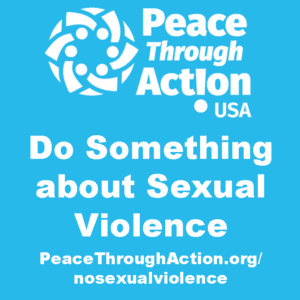 What is sexual violence?
What is sexual violence?
Sexual violence is “any sexual act, attempt to obtain a sexual act, unwanted sexual comments or advances, or acts to traffic a person’s sexuality using coercion.”[1] The perpetrator may coerce the victim by intimidating them psychologically, threatening to fire or not hire the victim, or intoxicating them. Coercion may also occur when the victim is asleep or mentally incapable of understanding the situation.[2]
[1] Krug, E., Dahlberg, L., Mercy, J., Zwi, A., Lozano, R. World Health Organization (2002). World Report on Violence and Health. Retrieved from http://www.who.int/violence_injury_prevention/violence/global _campaign / en/chap6.pdf.
[2] Ibid.
How widespread is sexual violence in the United States?
- Nearly 1 in 5 (18.3 percent) women and 1 in 71 (1.4 percent) men experience rape at some point in their lives in the United States.[3]
- Approximately 1 in 20 women (5.6 percent) and 1 in 20 men (5.3 percent) experience sexual violence other than rape in their lives in the United States.[4]
- Among adult women, 6.9 percent of American Indian/Alaska Natives, 22 percent of non-Hispanic blacks, 18.8 percent of non-Hispanic whites, 14.6 percent of Hispanics, and 35.5 percent of women of multiple races experienced an attempted or a completed rape at some time in their lives.[5]
[3] Centers for Disease Control and Prevention. (2012). Sexual Violence: Facts At a Glance. Retrieved from https://www.cdc.gov/ViolencePrevention/pdf/SV-DataSheet-a.pdf.
[4] Ibid.
[5] Ibid.
What culture changes and public policies are necessary for preventing sexual violence?
Cultivating greater respect for women and girls and promoting sexual health in a way that emphasizes personal responsibility are both mechanisms for reducing the prevalence of sexual violence.[6] Mass media campaigns can be effective in changing attitudes toward sexual violence and helping to eliminate “rape culture.”[7] Additionally, providers such as doctors, teachers, law enforcement officers, child care workers, and others can be trained help to promote healthy sexual behavior and prevent sexual violence.[8]
[6] Ibid.
[7] Davis, R., Parks, L., Cohen, L. National Sexual Violence Resource Center. (2006) Sexual Violence and the Spectrum of Prevention: Towards A Community Solution. Retrieved from http://www.nsvrc.org/ sites/default/files/Publications_NSVRC_Booklets_Sexual-Violence-and-the-Spectrum-of-Prevention_Towards-a-Community-Solution_0.pdf.
[8] Ibid.
What practical solutions are effective for preventing sexual violence?
The most common strategies for preventing sexual violence focus on the victim, the perpetrator, or bystanders.[9] The most effective models focus on addressing dating violence among high school students through school-wide interventions and bystander-based models among college students.[10] Increased knowledge about the elements of sexual consent, sexual harassment and abuse, and changing harmful attitudes toward rape are common themes among these models.[11]
Learn more about these practical peaceful solutions in our Choose Peaceful Practices series of information pages.
[9] Centers for Disease Control and Prevention. (2017) Sexual Violence: Prevention Strategies. Retrieved from https://www.cdc.gov/violenceprevention/sexualviolence/prevention.html.
[10] Ibid.
[11] Ibid.
What can I do to prevent or stop sexual violence?
- Keep an eye on a friend—If you are going out in a group, plan to arrive together and leave together. If you decide to leave early, let your friends know. If you’re at a party, check in with them during the night to see how they’re doing. If something doesn’t look right, step in. Don’t be afraid to let a friend know if something is making you uncomfortable or if you are worried about their safety.[12]
- Don’t leave a drink unattended—Keep your drink with you at all times. Throw it out if you do leave it unattended while going to the restroom, dancing, or making a phone call.[13]
- Have a code word—Develop a code with friends or family that means “I’m uncomfortable” or “I need help.”[14]
- Think of an escape route—Locate the doors, windows, or any others means of exiting the situation as soon as you arrive at the place you are gathering.[15]
- Contact the National Sexual Assault Hotline—at 656.HOPE, online.rainn.org and rainn.org/es (Spanish) for confidential support from a trained staff member, help finding a health facility trained to care for sexual assault survivors, and referrals to legal and support services.
- In case of emergency—If you are experiencing or witnessing an emergency, such as an IPV incident, call 911 or try to get to a location where others can observe your distress and intervene.
[12] RAINN. Alcohol Safety. Retrieved from https://www.rainn.org/articles/alcohol-safety.
[13] Ibid.
[14] Ibid.
[15] Ibid.
Where can I find statistics about sexual violence?
For national-level statistics about sexual violence, go to:
- Bureau of Justice Statistics—https://bjs.ojp.gov/data-collection/ncvs
- Centers for Disease Control and Prevention—https://www.cdc.gov/violenceprevention/datasources/nisvs/index.html
Where else might I go to learn more about sexual violence?
- Centers for Disease Control and Prevention—sexual violence webpage.
- National Sexual Violence Resource Center—research and tools on sexual violence.
- Rape, Abuse & Incest National Network—nation’s largest anti-sexual violence organization.
Information Sheet-Do Something-Sexual Violence (PDF)
Peace Through Action USA activates and equips Americans to implement practical peaceful solutions to aggression and violence in their communities and our country. We are a charitable, civic and social capital-building organization.
Have a suggested improvement to this information sheet? Send it to inbox@peacethroughaction.org.
[12] RAINN. Alcohol Safety. Retrieved from https://www.rainn.org/articles/alcohol-safety
[13] Ibid.
[14] Ibid.
[15] Ibid.
Do Something Right Away to Increase Peace
Post this page to LinkedIn
Subscribe to our YouTube channel
Give money to support Peace Through Action’s mission delivery activities
Choose opportunities to take part in our #PeaceBeginsWithWe campaign
